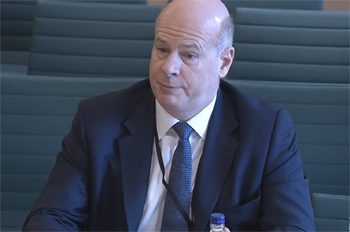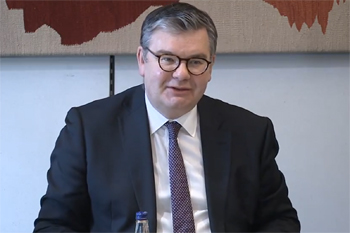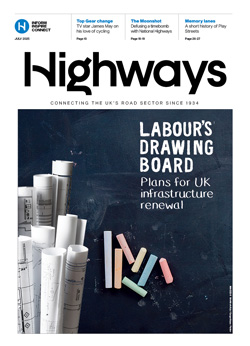A senior MP has challenged National Highways’ chief executive over his inaccurate claim last summer that stopped vehicle detection (SVD) technology on smart motorways was ‘currently achieving’ the company’s performance requirements.
In December, the Office of Rail and Road (ORR) disclosed that the technology was falling short of performance requirements for detection rate, speed of detection and false alerts at both a national and regional level.
 At a hearing of the Transport Select Committee last July, National Highways boss Nick Harris (right) told MPs: ‘We are currently achieving the specification.’
At a hearing of the Transport Select Committee last July, National Highways boss Nick Harris (right) told MPs: ‘We are currently achieving the specification.’
He explained: ‘The important thing is that it does not go from commissioning into business as usual operation until we are achieving those parameters, so it has to be achieving them.’
However, as Highways reported last week, no schemes to install SVD on existing or new all lane running (ALR) schemes have transitioned to business as usual, because they are not yet meeting core performance requirements.
At a committee hearing on Wednesday, chair Iain Stewart MP reminded Mr Harris about his claim that the specification was being met, adding: ‘That doesn’t seem to be happening.’
In response, Mr Harris said the technology ‘is working and is adding significantly to safety alongside all the other systems that we have in place’.
He wen on to imply that the poor performance reported by the ORR was a historical issue, stating that ‘many of the instances of SVD were completed in the August/September period’. He said: ‘We were still in the commissioning phase with the data that the ORR report talked about.’
In fact, all schemes are still ‘in the commissioning phase’, and contrary to Mr Harris’ claim that the ORR report reflected installations completed in the autumn, he had told MPs in July that ‘as we speak’, about 150 miles, representing three-quarters of the total 200 miles of all lane running smart motorway, were covered by SVD and ‘operational’.
In the recent hearing, Mr Harris described the company’s performance requirements for SVD as ‘very challenging’. Last year he responded to a crash on the M3 where the technology had missed a stationary lorry by saying that the company had been ‘very clear’ that the technology is required to spot ‘at least 80% of stopped vehicles, not 100%’, and that the missed detection ‘falls into the 20%’.
 Invited by Mr Stewart (right) to confirm that the ‘poor performance’ reported by the ORR had improved, Mr Harris disputed that it had been ‘poor’, claiming that SVD had been ‘operating at a good level’.
Invited by Mr Stewart (right) to confirm that the ‘poor performance’ reported by the ORR had improved, Mr Harris disputed that it had been ‘poor’, claiming that SVD had been ‘operating at a good level’.
The ORR reported that nationally SVD was detecting only two in three (67.5%) stopped vehicles, with false alerts nationally at 74.8% of all alerts against the requirement that it should be no higher than 15%, and alerts triggered after an average of 47.6 seconds against a maximum of 20 seconds.
A fourth ‘core requirement’ for SVD is that it should achieve 95% coverage of the stretch of motorway on which it is installed.
AA president Edmund King told Highways: ‘It appears National Highways is always playing catch-up when it comes to “smart” motorway technology. Whilst we accept that retro-fitting Stopped Vehicle Detection across the network and meeting targets is a big task, we have argued consistently over the last decade that “smart” motorways should never have been rolled out without all the technology in place, to begin with.’





